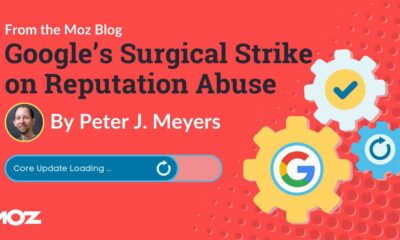MARKETING
AI in 2024: A Digital Marketer’s Guide to Benefits and Pitfalls
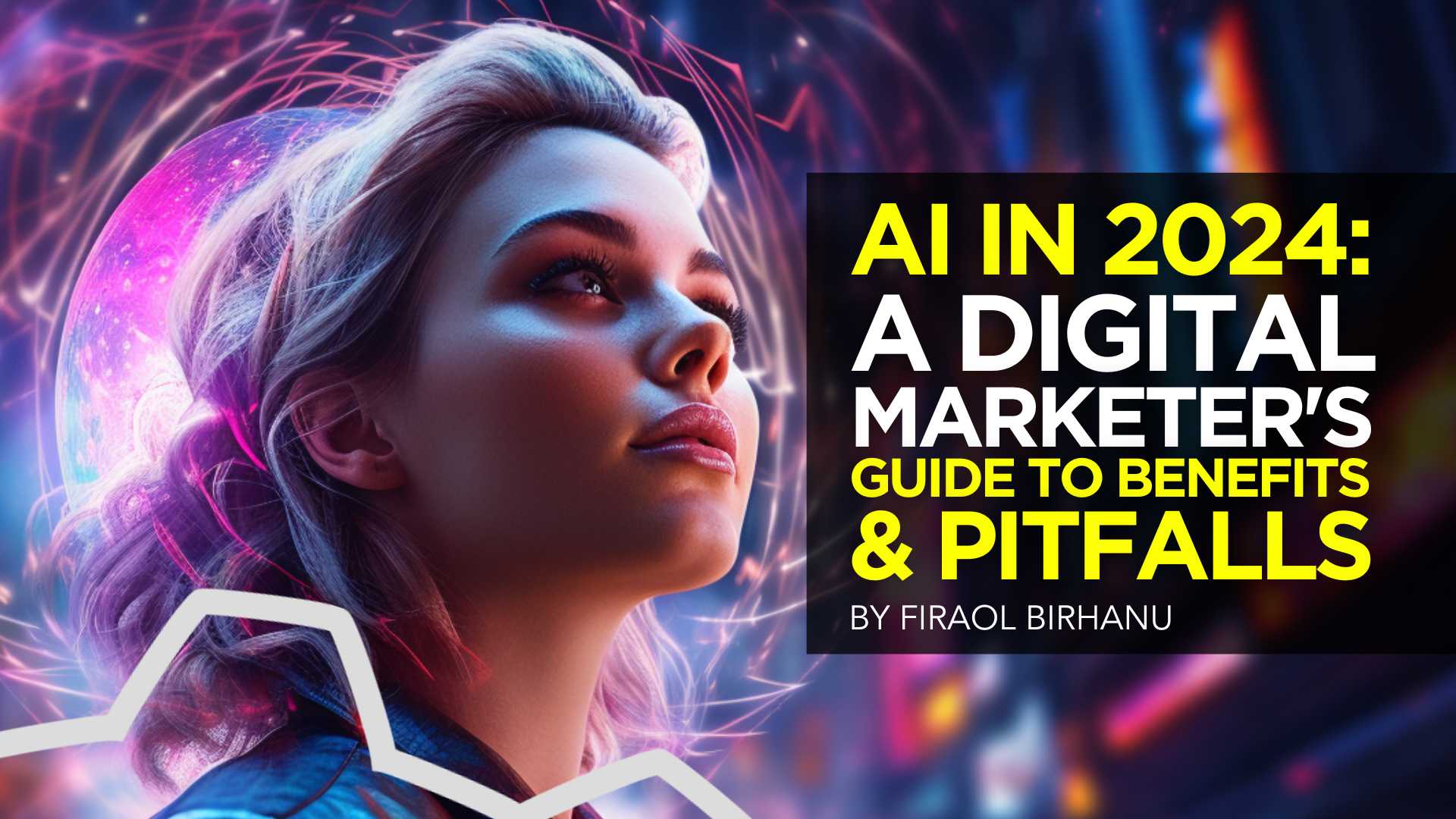
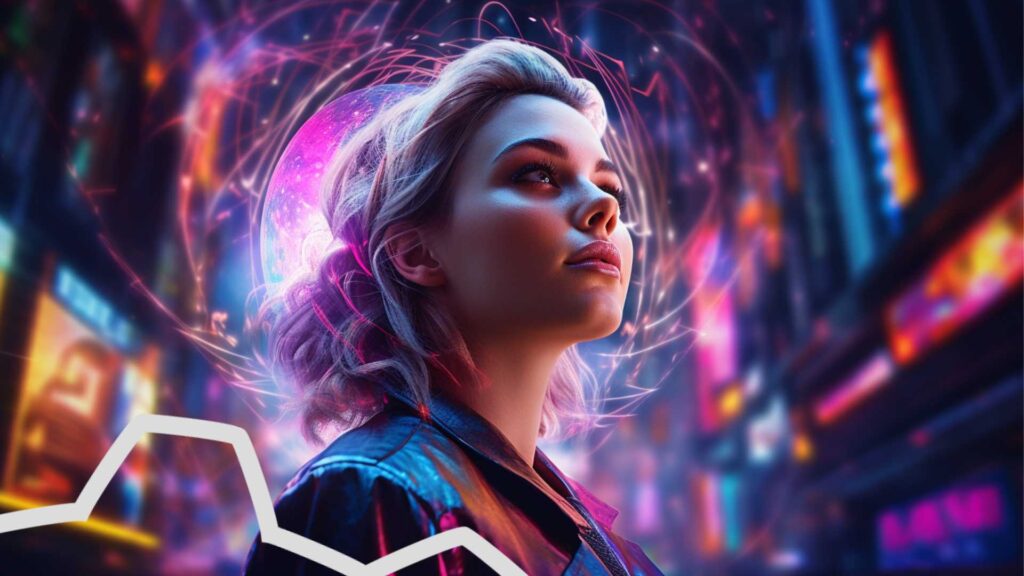
Whether you love it or hate it, there’s no escaping it! When it comes to AI or artificial intelligence, this statement holds true.
Today, over 80% of digital marketers make use of AI in some way or the other. Whether it is using ChatGPT for generating ideas or Jasper for your captions, AI is here to stay.
More and more AI tools are cropping up with the promise of making your job easier. So, should you jump on the bandwagon in 2024? Is AI for you?
Don’t worry. This article has all the answers as we walk you through the benefits and drawbacks of artificial intelligence in digital marketing in 2024. So, let’s delve right in!
First, let’s unpack all the exciting benefits AI has to offer in the field of digital marketing in 2024.
1. Taking Up Personalization a Notch Higher
In 2024, AI’s impact on digital marketing is more pronounced than ever. One of the reasons for this can be that people are more receptive to advanced technology and are willing to give it a try.
But how can it help with personalization? Well, sophisticated AI algorithms can help businesses fine-tune their interactions with users.
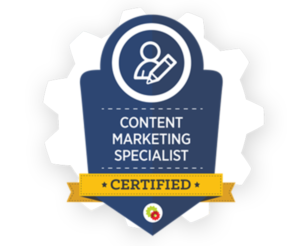

Want to get certified in Content Marketing?
Leverage the tools and channels to predictably and profitably drive awareness, leads, sales, and referrals—EVERYTHING you need to know to become a true master of digital marketing. Click Here
By analyzing vast datasets, AI differentiates between individual preferences, behaviors, and demographics. All these pointers allow you to deliver hyper-personalized content, product recommendations, and user experiences. Now, if you are wondering, is personalization even necessary? The answer is a big yes!
Around 91% of consumers say they are more likely to shop with brands that provide offers and recommendations that are relevant to them. So, to help you out, AI can assist with customized email campaigns to vibrant website content so you connect well with your consumers.
Additionally, AI is valuable across both the B2C and the B2B customer journey, elevating personalized interactions throughout every stage.
2. Optimized Advertising Strategies that Actually Work
In 2024, the integration of Artificial Intelligence can redefine your advertising strategies in digital marketing.
AI comes with analytical powers that can transform your advertising precision.
What does this do? Simple! It ensures that your message reaches the right audience at the right time.
After all, that’s the key to successful advertising campaigns- reaching the target audience at the perfect time!
So, how does it work?
Well, with the help of machine learning algorithms, you can decipher user behavior patterns, optimize ad targeting, and more.
End of the day, you can elevate ad efficiency with AI and add a personal touch to guarantee a better response.
3. Improved Content Creation that Aligns with the Brand
Content is no longer the king but the entire kingdom. This aspect is only going to grow in 2024. However, with AI, content creation can become easier as it injects efficiency and innovation.
AI-powered tools possess the necessary skills to curate relevant yet engaging content that can save you time and other resources. From automated copywriting to rewriting a piece of content, AI writers are well-versed in this creative process. There’s more. With the right AI tools, you can create content that resonates with your brand voice.
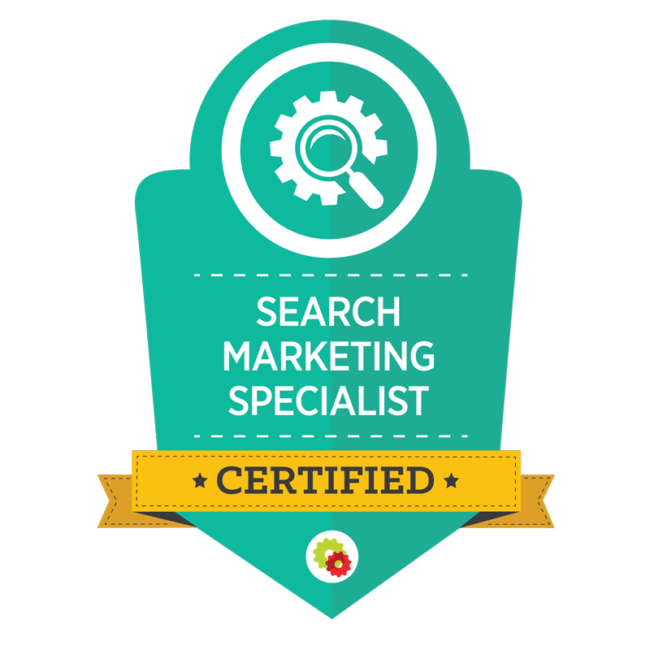

You’ve Been Taught SEO ALL WRONG
Become a Certified Search Marketing Specialist and Start Boosting Your Sales by Attracting and Converting Your Ideal Leads Everywhere They Are.
For instance, having podcasts nowadays is a great way to establish a brand voice and convey your message. However, traditional podcasts usually take a lot of time to produce. But that’s no longer the case. Nowadays, you need to learn how to create a podcast with generative AI to be more productive.
So, as a digital marketer, you can now focus on strategy and ideation!
4. Implement of Change Your Strategies Successfully
Bored with the current strategy? It’s not working well for you? In need of a new plan of action? Well, AI has your back. By infusing sophisticated algorithms into your traditional workflows, you can make way for effective and beautiful strategies that help you reach your goals.
What AI does is that it enhances data analysis, offer you actionable insights, and encourages the right decision.
Amazing, isn’t it?
5. Elevates Bottom Line & ROI
Integrating AI into digital marketing offers a major advantage by significantly boosting the bottom line and overall return on investment for campaigns.
How?
Through data-driven insights and predictive analytics, AI improves your marketing strategies. So, all the resources are allocated to the most impactful channels and campaigns.
The result? Heightened campaign effectiveness, increased conversion rates, and a positive impact on the organization’s financial outcomes. Wow! And, all it takes is the support of AI!
6. Help to Produce Creative Graphic Designs
The capacity to accelerate the design process is one of the most significant advantages of AI in design. AI-powered tools can create unique design concepts, layout possibilities, and color schemes rapidly, cutting project completion time in half.


Become a Certified Community Specialist
Learn how to develop meaningful relationships with your customers and automate the customer acquisition process.
Let’s see one of the biggest markets that mostly use creative designs, the “Print On Demand market”. You agree with that, right?
The AI Print On Demand market is changing how marketers make and sell products. Creators and business owners may use AI to create custom merchandise and streamline their processes by leveraging cutting-edge technology.
AI is having a huge impact on the print-on-demand and general graphics designing industries, by changing how designs are made, mockups are generated, and so on.
7. Increase Operational Efficiency In Your Campaigns
The amalgamation of AI into operational processes means a surge in efficiency. Who wouldn’t want that?
AI takes away the burden from you, decreasing human-intensive work, and enabling a more agile and productive operational environment. It also leads to automation of data analysis, reporting, and other repetitive tasks.
Let’s say you want to build a landing page to market your product, and the main task in this process is copywriting, to lead visitors to take the next step, and build lead generation forms that collect your visitor’s contact information. There are some AI tools you can use to complete these tasks within a few minutes.
In fact, when you take a look at the overall operational benefits, it not only accelerates workflows but also reduces errors. So, in short, it enhances overall efficiency.
8. Voice Search Optimization
Search engine optimization is important. But what about voice search optimization? Today, more than 1 billion voice searches take place every month.
In 2024, voice search optimization is all set to become a major aspect of digital marketing as more users embrace voice-activated devices. With the growing popularity of virtual assistants like Siri, Alexa, and Google Assistant, you must adapt their SEO strategies to cater to voice searches.
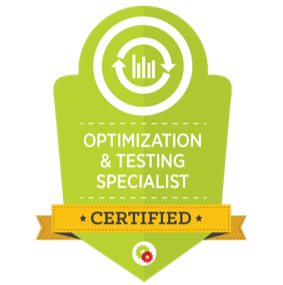

Conversion Rate Optimization Expert
FACT: Businesses NEED Optimization Experts (…Who Actually Know What They’re Doing) All businesses need a way to optimize the traffic they’re already getting to generate more leads and more sales.
When it comes to VSO, it becomes crucial to customize the content to match natural language queries. Here, the focus must be on conversational keywords to provide concise and informative answers. And AI can help you out.
Now that you know about the major benefits of AI in digital marketing, let’s unpack the drawbacks associated with it.
1. Privacy Concerns
With the growth of AI in digital marketing in 2024, one major drawback we must be aware of is privacy concerns. Let’s just say that the increasing reliance on AI for data analysis and personalization raises questions about the security of user information.
But wait. Before you get disheartened, it’s important to understand this. You can still use AI to gain insights into consumer behavior. However, it is crucial to strike a delicate balance between delivering personalized experiences and respecting user privacy.
All you need are proper data protection measures in place. Along with transparent data usage policies and compliance with the changing privacy regulations. If you can do this, you have nothing to worry about.
2. Becoming Overly Dependent on Automation
Heard of the saying anything of too much can be too bad? Well, this holds true in this scenario.
Chances are we may start to overly rely on AI in digital marketing, which can put you at risk of losing the human touch. And this is a major aspect of any marketing campaign.
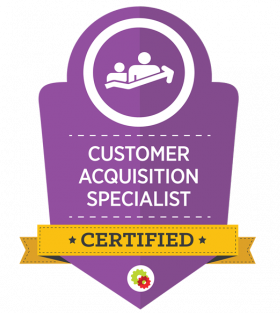

The Industry’s Most Comprehensive Paid Traffic Certification For The Post-Privacy World
Overcome iOS updates, crumbling campaigns, and surging ad costs by mastering the most cutting-edge media buying strategies from the top traffic experts in the game today.
For instance, if you’re an email marketer, AI may help in the tracking of email marketing campaigns, generating subject lines, and personalizing email copies. But if you do your email marketing tasks fully automated, from designing templates to creating emails, that will negatively affect your business.
The question you must ask yourself is what makes you stand out. Because with excessive reliance on AI, your campaigns may result in generic, impersonal interactions, which can even alienate your customers. Definitely not good for your business!
Therefore, proper amalgamation of automated processes and human creativity is essential to maintain a personalized and emotionally resonant connection with the audience.
3. Implementation Costs and Skill Gaps
Implementing AI for digital marketing in 2024 may not be cost-effective for all. Now, you may be wondering, what about the free AI tools? Well, they cannot help you be innovative, can they? As they come with a set of limitations.
To stand out and integrate advanced AI technologies, the initial investment may be high. This can be a barrier for businesses, especially smaller enterprises.
While AI means automation, you still need experts to manage and optimize AI systems. Training existing staff or hiring qualified personnel becomes crucial. This can feel like a complex chore, and you can hire professionals who can get the job done without AI. It can be simpler in some cases.
4. Unintended Consequences of AI Decisions
Now, AI systems tend to make autonomous decisions (for instance, in digital signage). This is a risk because some decisions may be unexpected, and even lead to potentially negative outcomes.
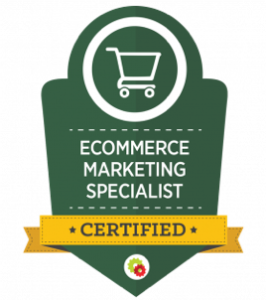

Become A Certified E-Commerce Marketing Master
The Industry’s Most Comprehensive E-Commerce Marketing Certification For The Modern Marketer. Turn Products Into Profit, Browsers Into Buyers, & Past Purchasers Into Life-Long Customers.
Remember, AI is not so cut and dry. Biases within algorithms, misinterpretation of data, or unforeseen interactions can occur, and this can lead to unintended consequences.
So, to avoid this, you must ensure vigilant monitoring, interpretability, and continual refinement of AI models. If this feels like too much work, AI may not be ideal for you.
5. Regulatory Compliance and Changing Laws
It’s crucial to ensure regulatory compliance with AI-driven digital marketing as new laws and policies keep cropping up. Remember, we have never had AI before. This innovation is a first and as it evolves, the rules and regulations also keep getting strict.
Therefore, adhering to stringent regulations is essential to building trust with consumers and avoiding any legal ramifications.
In 2024, you must steer through the complex data protection laws, such as the Digital Data Personal Protection Bill, to protect user information. This is just one example. So, you must stay on top of your game here and implement proactive measures for a secure and trustworthy digital environment for consumers.
Should Companies/Agencies Use AI in Their Marketing Process?
Now you must be wondering if you must embrace AI or discard it. Well, we think striking the right balance is the key. Over-reliance on AI can be dangerous because you tend to limit yourself and not gain the necessary skills.
That said, letting go of AI is not ideal. Companies and agencies should make use of AI in their marketing processes to gain a competitive edge and enhance efficiency.
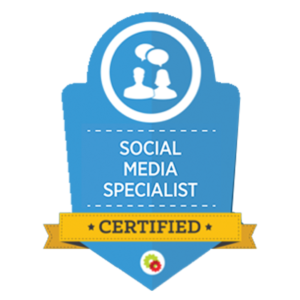

Are You Ready to Master Social Media?
Become a Certified Social Media Specialist and learn the newest strategies (by social platform) to draw organic traffic to your social media sites.
Remember, AI brings powerful tools such as machine learning algorithms, predictive analytics, natural language processing, and so much more. This enables you to dig deep and unpack vast amounts of data while deriving actionable insights. The bottom line is that when you understand customer behavior and preferences, AI can help customize marketing strategies to make way for personalized and targeted campaigns. This is crucial as it drives your desired results.
AI-driven automation can streamline and even optimize routine tasks like email marketing, social media management, and customer segmentation. All this allows marketing teams to focus on creative and strategic aspects. AI also helps with pricing, optimizing advertising spend, and improving ROI.
Even chatbots, powered by AI can be used to enhance customer engagement by providing instant responses and personalized interactions. After all, today, people want everything this very instant, and catering to this need can help you build a loyal consumer base.
The Final Word
These were the main pros and cons of AI in digital marketing in 2024. Remember, while AI can be a boon, it is important to keep that human touch and creativity alive. It is truly a wise move to embrace the power of AI. That said, We live in a competitive market. So, you must always strive to gain an edge and stand out. You must equip yourself with a nuanced approach while ensuring ethical practices. If you do all that is required, you are good to go!
MARKETING
Google’s Surgical Strike on Reputation Abuse
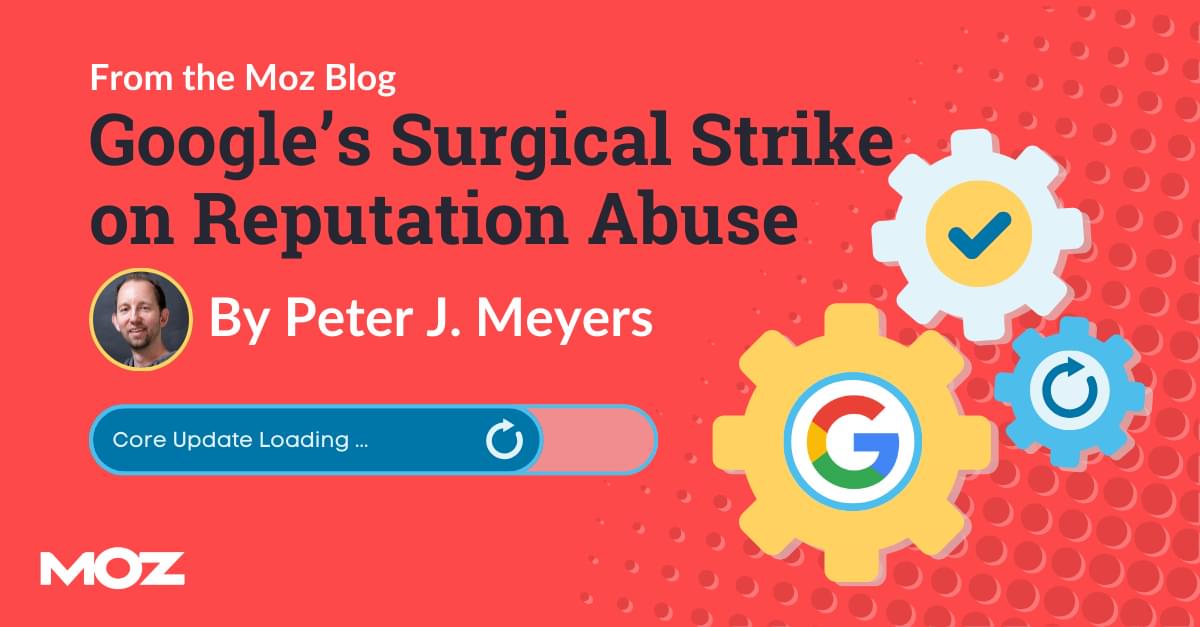
These aren’t easy questions. On the one hand, many of these sites do clearly fit Google’s warning and were using their authority and reputation to rank content that is low-relevance to the main site and its visitors. With any punitive action, though, the problem is that the sites ranking below the penalized sites may not be of any higher quality. Is USA Today’s coupon section less useful than the dedicated coupon sites that will take its place from the perspective of searchers? Probably not, especially since the data comes from similar sources.
There is a legitimate question of trust here — searchers are more likely to trust this content if it’s attached to a major brand. If a site is hosting third-party content, such as a coupon marketplace, then they’re essentially lending their brand and credibility to content that they haven’t vetted. This could be seen as an abuse of trust.
In Google’s eyes, I suspect the problem is that this tactic has just spread too far, and they couldn’t continue to ignore it. Unfortunately for the sites that were hit, the penalties were severe and wiped out impacted content. Regardless of how we feel about the outcome, this was not an empty threat, and SEOs need to take Google’s new guidelines seriously.
MARKETING
18 Events and Conferences for Black Entrepreneurs in 2024
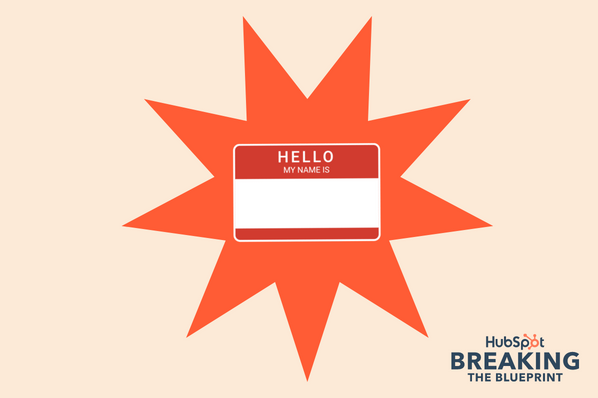
Welcome to Breaking the Blueprint — a blog series that dives into the unique business challenges and opportunities of underrepresented business owners and entrepreneurs. Learn how they’ve grown or scaled their businesses, explored entrepreneurial ventures within their companies, or created side hustles, and how their stories can inspire and inform your own success.
It can feel isolating if you’re the only one in the room who looks like you.
MARKETING
IAB Podcast Upfront highlights rebounding audiences and increased innovation
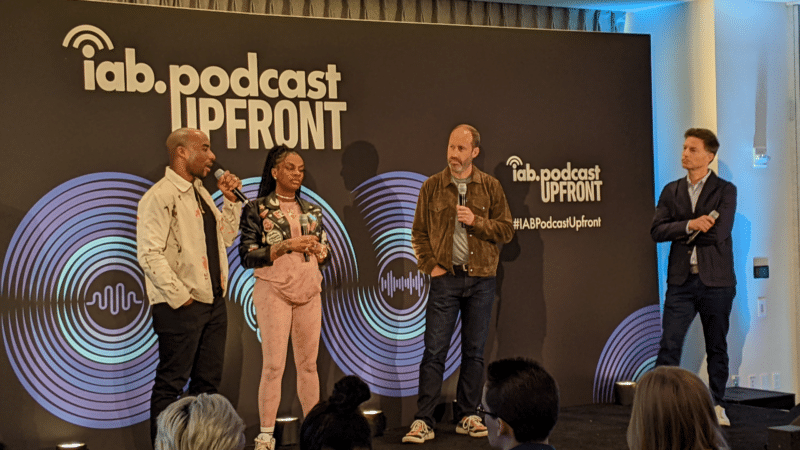
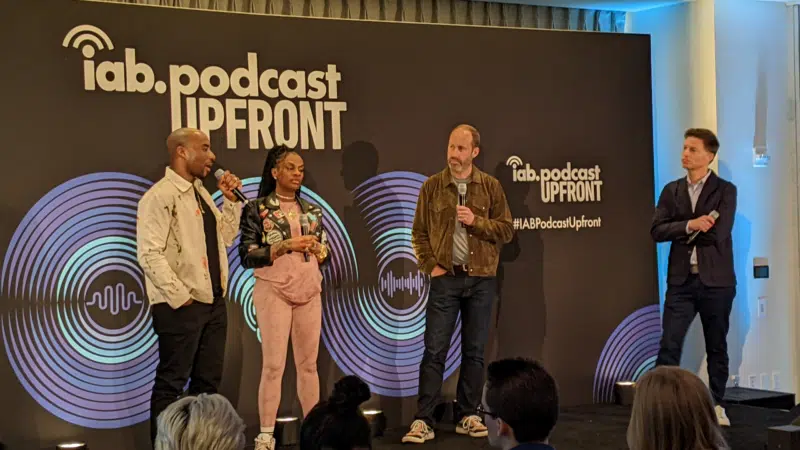
Podcasts are bouncing back from last year’s slowdown with digital audio publishers, tech partners and brands innovating to build deep relationships with listeners.
At the IAB Podcast Upfront in New York this week, hit shows and successful brand placements were lauded. In addition to the excitement generated by stars like Jon Stewart and Charlamagne tha God, the numbers gauging the industry also showed promise.
U.S. podcast revenue is expected to grow 12% to reach $2 billion — up from 5% growth last year — according to a new IAB/PwC study. Podcasts are projected to reach $2.6 billion by 2026.
The growth is fueled by engaging content and the ability to measure its impact. Adtech is stepping in to measure, prove return on spend and manage brand safety in gripping, sometimes contentious, environments.
“As audio continues to evolve and gain traction, you can expect to hear new innovations around data, measurement, attribution and, crucially, about the ability to assess podcasting’s contribution to KPIs in comparison to other channels in the media mix,” said IAB CEO David Cohen, in his opening remarks.
Comedy and sports leading the way
Podcasting’s slowed growth in 2023 was indicative of lower ad budgets overall as advertisers braced for economic headwinds, according to Matt Shapo, director, Media Center for IAB, in his keynote. The drought is largely over. Data from media analytics firm Guideline found podcast gross media spend up 21.7% in Q1 2024 over Q1 2023. Monthly U.S. podcast listeners now number 135 million, averaging 8.3 podcast episodes per week, according to Edison Research.
Comedy overtook sports and news to become the top podcast category, according to the new IAB report, “U.S. Podcast Advertising Revenue Study: 2023 Revenue & 2024-2026 Growth Projects.” Comedy podcasts gained nearly 300 new advertisers in Q4 2023.
Sports defended second place among popular genres in the report. Announcements from the stage largely followed these preferences.
Jon Stewart, who recently returned to “The Daily Show” to host Mondays, announced a new podcast, “The Weekly Show with Jon Stewart,” via video message at the Upfront. The podcast will start next month and is part of Paramount Audio’s roster, which has a strong sports lineup thanks to its association with CBS Sports.
Reaching underserved groups and tastes
IHeartMedia toasted its partnership with radio and TV host Charlamagne tha God. Charlamagne’s The Black Effect is the largest podcast network in the U.S. for and by black creators. Comedian Jess Hilarious spoke about becoming the newest co-host of the long-running “The Breakfast Club” earlier this year, and doing it while pregnant.
The company also announced a new partnership with Hello Sunshine, a media company founded by Oscar-winner Reese Witherspoon. One resulting podcast, “The Bright Side,” is hosted by journalists Danielle Robay and Simone Boyce. The inspiration for the show was to tell positive stories as a counterweight to negativity in the culture.
With such a large population listening to podcasts, advertisers can now benefit from reaching specific groups catered to by fine-tuned creators and topics. As the top U.S. audio network, iHeartMedia touted its reach of 276 million broadcast listeners.
Connecting advertisers with the right audience
Through its acquisition of technology, including audio adtech company Triton Digital in 2021, as well as data partnerships, iHeartMedia claims a targetable audience of 34 million podcast listeners through its podcast network, and a broader audio audience of 226 million for advertisers, using first- and third-party data.
“A more diverse audience is tuning in, creating more opportunities for more genres to reach consumers — from true crime to business to history to science and culture, there is content for everyone,” Cohen said.
The IAB study found that the top individual advertiser categories in 2023 were Arts, Entertainment and Media (14%), Financial Services (13%), CPG (12%) and Retail (11%). The largest segment of advertisers was Other (27%), which means many podcast advertisers have distinct products and services and are looking to connect with similarly personalized content.
Acast, the top global podcast network, founded in Stockholm a decade ago, boasts 125,000 shows and 400 million monthly listeners. The company acquired podcast database Podchaser in 2022 to gain insights on 4.5 million podcasts (at the time) with over 1.7 billion data points.
Measurement and brand safety
Technology is catching up to the sheer volume of content in the digital audio space. Measurement company Adelaide developed its standard unit of attention, the AU, to predict how effective ad placements will be in an “apples to apples” way across channels. This method is used by The Coca-Cola Company, NBA and AB InBev, among other big advertisers.
In a study with National Public Media, which includes NPR radio and popular podcasts like the “Tiny Desk” concert series, Adelaide found that NPR, on average, scored 10% higher than Adelaide’s Podcast AU Benchmarks, correlating to full-funnel outcomes. NPR listeners weren’t just clicking through to advertisers’ sites, they were considering making a purchase.
Advertisers can also get deep insights on ad effectiveness through Wondery’s premium podcasts — the company was acquired by Amazon in 2020. Ads on its podcasts can now be managed through the Amazon DSP, and measurement of purchases resulting from ads will soon be available.
The podcast landscape is growing rapidly, and advertisers are understandably concerned about involving their brands with potentially controversial content. AI company Seekr develops large language models (LLMs) to analyze online content, including the context around what’s being said on a podcast. It offers a civility rating that determines if a podcast mentioning “shootings,” for instance, is speaking responsibly and civilly about the topic. In doing so, Seekr adds a layer of confidence for advertisers who would otherwise pass over an opportunity to reach an engaged audience on a topic that means a lot to them. Seekr recently partnered with ad agency Oxford Road to bring more confidence to clients.
“When we move beyond the top 100 podcasts, it becomes infinitely more challenging for these long tails of podcasts to be discovered and monetized,” said Pat LaCroix, EVP, strategic partnerships at Seekr. “Media has a trust problem. We’re living in a time of content fragmentation, political polarization and misinformation. This is all leading to a complex and challenging environment for brands to navigate, especially in a channel where brand safety tools have been in the infancy stage.”
Dig deeper: 10 top marketing podcasts for 2024
-

 PPC7 days ago
PPC7 days agoHow the TikTok Algorithm Works in 2024 (+9 Ways to Go Viral)
-

 SEO6 days ago
SEO6 days agoHow to Use Keywords for SEO: The Complete Beginner’s Guide
-

 MARKETING7 days ago
MARKETING7 days agoHow To Protect Your People and Brand
-
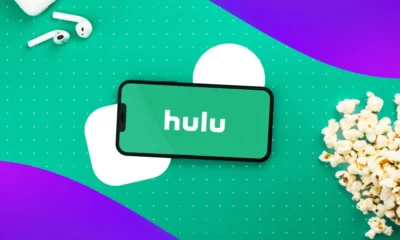
 MARKETING4 days ago
MARKETING4 days agoAdvertising on Hulu: Ad Formats, Examples & Tips
-
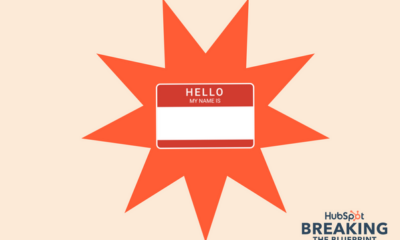
 MARKETING1 day ago
MARKETING1 day ago18 Events and Conferences for Black Entrepreneurs in 2024
-

 MARKETING5 days ago
MARKETING5 days agoUpdates to data build service for better developer experiences
-

 MARKETING6 days ago
MARKETING6 days agoThe Ultimate Guide to Email Marketing
-
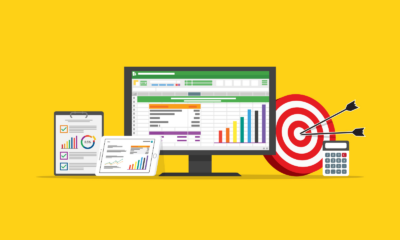
 SEO7 days ago
SEO7 days agoAutomate Multi-Site Reporting With Google Sheets And GSC API



